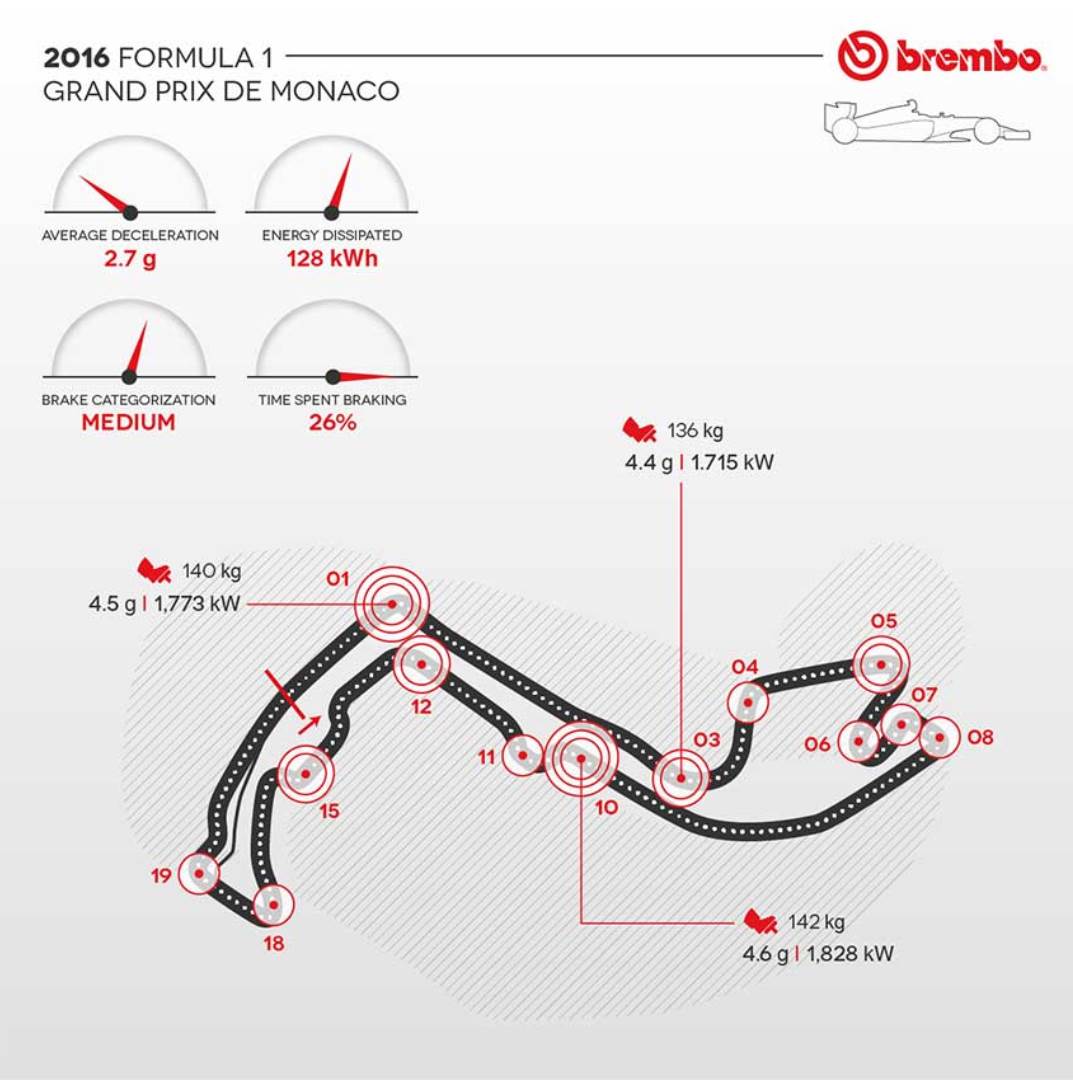The street circuit in Monaco will host the 6th race of the 2016 Formula 1 World Championship season from 26 to 29 May. The historic track, which snakes through the streets of the Principality of Monaco, is one of the four magnificent circuits used in the first edition of the F1 World Championship in 1950, and it is still being used today.
It has been modified slightly over the years, the most recent change having been made in 2015 to the Tabac turn, which brought the length to 3,337 metres. This figure however is quite moderate since it is almost one kilometre shorter than the second shortest track in the Championship, the one in Mexico City. The Circuit de Monaco causes a significant amount of problems for the brakes on the single-seaters. Indeed, the winding track and limited grip often require the driver to control the car with the help of the brake, bringing on negative consequences for the temperature of the calipers and brake fluid.
In the past, this event was frequently a stage for issues linked to overheating the system and vapour lock (the phenomenon where the brake fluid reaches boiling temperature inside the caliper) with elongation of the pedal while braking, circumstances that often led to either retiring the car or if not, an accident. In the 1990 Monaco GP, Derek Warwick and Ivan Capelli were obligated to retire for just these kinds of problems with the brakes, although neither of them were equipped with a Brembo system.
In this modern age, the Brembo technicians have worked on cooling the brakes to put these problems at bay, although it is still necessary to pay particular attention to managing the temperatures during the race weekend. According to Brembo technicians, who classified the 21 World Championship tracks on a scale of 1 to 10, the Circuit de Monaco is in the category of tracks that present mid-level difficulty for the brakes. The Monaco track earned a 7 on the difficulty index, which is exactly what the other city track in Melbourne got.

